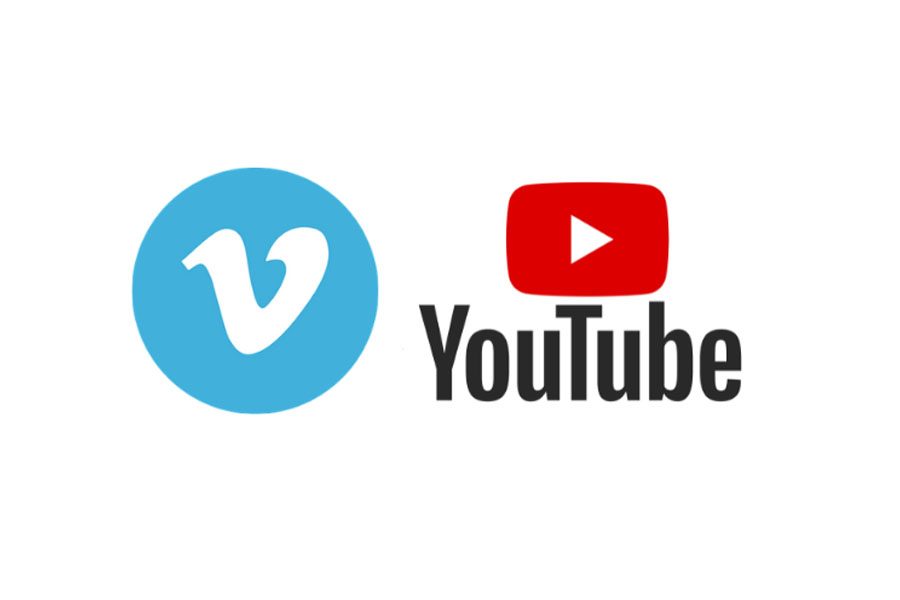One of the most effective methods of attracting new clients is video marketing. You invest a lot of time and thought into writing, planning, and filming videos for your company; as a result, how your material is seen is equally crucial.
You have a wide variety of alternatives when it comes to how to embed videos on your website. The two most popular ones are, however, YouTube vs Vimeo. Both of them are well-known sites that have existed for a while.
Affordable digital marketing services utilizing videos on your website increases user engagement and boosts conversion rates. However, there are no embedding standards, which occasionally causes compatibility problems. So which of the two most popular video-sharing websites, Vimeo and YouTube,
YouTube vs Vimeo
Pricing
Both Vimeo and YouTube are for-profit businesses. Depending on how businesses successfully implement, they have several price alternatives.
Free to use, YouTube. mostly because they profit from running adverts. These commercials can be seen in the YouTube app, the sidebar, and the video player. For users, YouTube also provides a premium subscription service called YouTube Red. With this service, viewers may access YouTube original series without any commercials.
However, you’ll be allowed to upload quite so many videos as you’d like without charge if you’re a content provider.You won’t be able to post videos longer than 15 minutes in the beginning. By validating your account
Compared to YouTube, Vimeo has a very different business model. In order for publishers and web development agency provides their viewers with an ad-free viewing experience, they generate their money by providing video hosting services. Set to start with the free version, which has storage restrictions of 500 MB per week and 25 GB annually, they offer a variety of price options. You can then sign up for Vimeo Plus, Pro, or Business strategies after that. They each offer various upload quotas and features.
Major factor in YouTube vs Vimeo is Size and Reach of the Audience
Both platforms provide choices for posting videos, have devoted groups, and include social aspects into their products.
YouTube clearly has the upper hand in terms of audience size and reach. Due to the fact that Google owns it, it is distinctly more noticeable in all of their other products. The YouTube app is pre-installed on almost all Android smartphones in existence.
One-third of the internet’s users—more than 1 billion—are members of the Social media world. It ranks as the second-most popular search engine globally.
Despite having a far lower user base than YouTube, Vimeo is nonetheless quite popular. Over 170 million people use Vimeo, and its user base is expanding quickly. Some of the most imaginative content producers in the world may be found on Vimeo.
Technical assistance
The calibre and quickness of technical support are just two of the many factors you must take into account before making a decision if you’re working on creating an effective YouTube vs Vimeo marketing strategy. Since Vimeo has paid plans, you get full value for your money. Personalized technical support is available at varying levels, unlike YouTube, which is free. Undoubtedly, YouTube provides free tutorials to help you get started, but Vimeo’s support is more individualized.
Image editing
Both platforms provide excellent tools for managing, uploading, and editing your videos.
Powerful video editing options are available on YouTube. You can make videos using their video editor by using your previously uploaded videos, pictures, titles, and other content. Utilizing the photographs and videos in Google Photos, you can easily make videos. Their online video editing tools provide a quick and easy way to create videos.
You can also add captions, subtitles, links, and snippets to your videos on YouTube. Additionally, it has a streaming video feature where you can broadcast media, events, or even just informal vlogs in real time.
There are fewer video editing capabilities available on Vimeo than on YouTube. It does, however, provide all the essentials. You can include the title, description, category, tags, licence, and audience rating for the video. Additionally, you can add subtitles and captions to your videos. Since Vimeo does not support annotations, you cannot include clickable links in your videos.
The best thing about Vimeo, however, is that you can switch out your video for a newer one without having to alter the URL or statistics. You cannot accomplish this on YouTube without posting a new video to a whole different URL.
Conclusion
YouTube vs Vimeo are the two most well-known video hosting sites. YouTube is owned by Google – so it’s a huge behemoth when it comes to video sharing, but Vimeo has been around for nearly 15 years and is a much smaller competitor for YouTube. The good news is both offer a wide range of features, so which one you choose depends on a number of factors including your specific needs.

